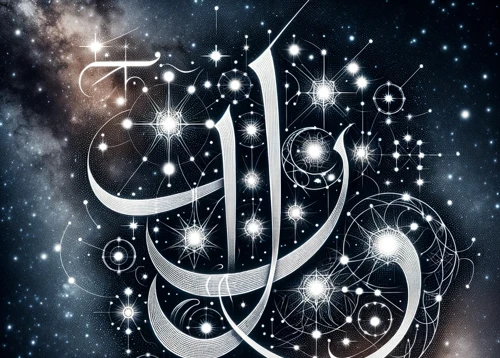Discover the enigmatic world of planetary symbols and unravel the mysteries that lie within. Have you ever wondered about the meaning behind the intricate symbols that represent each planet in our solar system? These symbols have a rich history, rooted in ancient mythology and astrology, and continue to captivate our imaginations to this day. In this article, we will delve into the origins of these symbols, explore their significance in astrology, decode their hidden meanings, and uncover their influence in art, literature, and popular culture. Prepare to embark on a fascinating journey as we peel back the layers of the celestial realm and shed light on the captivating symbolism of the planets.
Contents
- The Origins of Planetary Symbols
- The Planetary Symbol Guide
- Decoding Planetary Symbols
- The Influence of Planetary Symbols
- The Mystery Unveiled
- Conclusion
-
Frequently Asked Questions
- Why do planets have symbols?
- Who created the planetary symbols?
- Do different cultures have different planetary symbols?
- What is the significance of planetary symbols in astrology?
- Are there symbols for other celestial bodies besides planets?
- Can planetary symbols be found in constellations?
- How were the meanings behind planetary symbols determined?
- Are planetary symbols used outside of astrology?
- Can you explain the symbolism behind the Ophiuchus symbol?
- Where can I learn more about the symbolic meanings of planetary symbols?
- References
-
Frequently Asked Questions
- 1. What are the ancient origins of planetary symbols?
- 2. How are planetary symbols related to astrology?
- 3. What is the symbolism behind the Sun symbol?
- 4. What does the Moon symbol signify?
- 5. What does the Mercury symbol represent?
- 6. What is the significance of the Venus symbol?
- 7. What does the Mars symbol signify?
- 8. What is the symbolism behind the Jupiter symbol?
- 9. What does the Saturn symbol signify?
- 10. What is the symbolism behind the Neptune symbol?
- References
- Read More
The Origins of Planetary Symbols
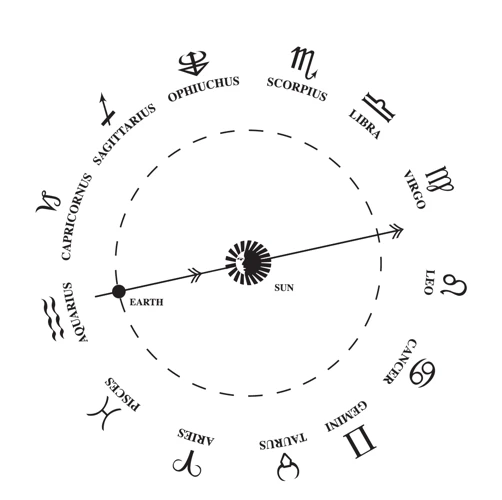
The Origins of Planetary Symbols can be traced back to ancient mythology and astrology. These symbols have been used for centuries to represent the various celestial bodies in our solar system. In ancient times, the planets were associated with different gods and goddesses from various mythologies. This association gave rise to the idea of using symbols to represent these celestial entities. For example, the symbol for the Sun is a circle with a dot in the center, representing the radiant and life-giving nature of the Sun. The Moon symbol is a crescent shape, reflecting the changing phases of the Moon. Mercury’s symbol is a combination of the crescent and a cross, representing the god’s role as a messenger. Venus’s symbol is a circle with a cross underneath, symbolizing femininity and love. Mars’s symbol is a circle with an arrow pointing upward, representing the god of war. Jupiter’s symbol is a stylized representation of the number four, associated with expansion and growth. Saturn’s symbol resembles a sickle, symbolizing time and harvest. Uranus’s symbol is a combination of the cross of matter and the sickle, reflecting the planet’s association with innovation and sudden changes. Neptune’s symbol is a trident, symbolizing the god of the sea. Pluto’s symbol is a combination of the letters P and L, representing the initials of the name Pluto. Additionally, the recently added Ophiuchus symbolizes a serpent bearer. These symbols not only have their roots in mythology but also play a crucial role in astrology, guiding horoscopes and providing insight into personality traits and the influence of the planets on individuals’ lives. Understanding the origins and meanings of these symbols allows us to delve deeper into the fascinating and complex world of astrology and further appreciate the connection between the celestial bodies and our lives on Earth.
Ancient Mythology and Symbolism
Ancient Mythology and Symbolism played a vital role in shaping the origins of planetary symbols. In the ancient world, various civilizations associated different gods and goddesses with the planets as a way to understand and explain the celestial bodies’ influence on Earth and human life. For example, the Sun symbol, a circle with a dot, represents the solar deity and the source of light and energy. The Moon symbol, a crescent shape, is connected to lunar deities and the ever-changing cycles of the Moon. The ancient Greeks associated the planet Mercury with Hermes, the messenger of the gods, hence the symbol of a crescent and a cross. Venus, representing love and beauty, is symbolized by a circle with a cross underneath. Mars, the god of war, is depicted with a circle and an arrow pointing upwards, signifying power and strength. Jupiter, associated with expansion and growth, is represented by a stylized number four. Saturn’s symbol, resembling a sickle, symbolizes time and the harvest. These mythological associations and symbols not only provided the ancient cultures with a way to comprehend the celestial bodies but also laid the foundation for the astrological interpretations and the significance of these symbols in modern times. Understanding the ancient mythology behind planetary symbols adds a sense of wonder and connection to the vast cosmos that has fascinated humans for centuries.
Astrological Associations
Astrological Associations play a significant role in understanding the symbolism of planetary symbols. Each planet holds specific astrological associations that provide insight into various aspects of human life and personality traits. Let’s explore these associations further:
1. The Sun: In astrology, the Sun is associated with vitality, leadership, and self-expression. It represents the essence of a person’s identity and influences their ego and willpower. As the center of the solar system, the Sun symbolizes power and life force.
2. The Moon: The Moon is closely tied to emotions, intuition, and the subconscious mind. It represents our inner world, our emotions, and our nurturing qualities. The Moon’s influence can impact our moods, instincts, and how we connect with others on an emotional level.
3. Mercury: Mercury rules communication, intelligence, and the mind. It governs how we express ourselves verbally and non-verbally, as well as our ability to think critically and process information. Mercury’s influence can be seen in our communication style, learning abilities, and problem-solving skills.
4. Venus: Venus is the planet of love, beauty, and relationships. It governs our values, sensuality, and aesthetic preferences. Venus influences our romantic inclinations and how we form connections with others. Click here to read more about the romantic side of the Taurus zodiac sign.
5. Mars: Mars represents energy, passion, and assertiveness. It symbolizes our drive, ambition, and how we assert ourselves in pursuit of our goals. Mars influences our courage, determination, and approach to conflict.
6. Jupiter: Jupiter is associated with expansion, abundance, and growth. It symbolizes good fortune, opportunities, and higher knowledge. Jupiter’s influence can be seen in our aspirations, belief systems, and capacity for personal and spiritual growth.
7. Saturn: Saturn represents structure, responsibility, and discipline. It governs our long-term goals, commitments, and the lessons we learn through challenges and limitations. Saturn’s influence can shape our work ethic, sense of responsibility, and ability to overcome obstacles.
8. Uranus: Uranus is associated with innovation, revolution, and individuality. It represents uniqueness, unconventional thinking, and unexpected changes. Uranus inspires us to embrace our authentic selves and break free from societal norms.
9. Neptune: Neptune symbolizes spirituality, dreams, and imagination. It governs our intuitive abilities, creativity, and connection to the unseen realm. Neptune’s influence can be felt in our artistic endeavors, compassion, and capacity for spiritual growth.
10. Pluto: Pluto represents transformation, rebirth, and power. It governs our ability to release old patterns, undergo deep inner change, and experience personal growth. Pluto’s influence can be intense and transformative, often bringing about significant endings and new beginnings.
Understanding these astrological associations allows us to interpret the planetary symbols in a broader context and gain deeper insights into their significance in astrology. It helps astrologers and enthusiasts alike to unlock the symbolic language of the planets and better understand their influences on individual lives.
The Planetary Symbol Guide

The Planetary Symbol Guide provides a comprehensive look at each symbol representing the planets in our solar system. Each symbol holds unique significance and offers a glimpse into the characteristics associated with its corresponding planet. Let’s explore these symbols in more detail. The Sun symbol, a circle with a dot in the center, represents vitality, energy, and life. The Moon symbol, a crescent shape, signifies intuition, emotions, and feminine energy. Mercury’s symbol, a combination of a crescent and a cross, symbolizes communication, intellect, and adaptability. Venus’s symbol, a circle with a cross underneath, embodies love, beauty, and harmony. Mars’s symbol, a circle with an arrow pointing upward, signifies courage, assertiveness, and passion. Jupiter’s symbol, resembling the number four, represents expansion, abundance, and luck. Saturn’s symbol, resembling a sickle, represents discipline, responsibility, and structure. Uranus’s symbol, a combination of a cross and a sickle, symbolizes innovation, rebellion, and unconventional thinking. Neptune’s symbol, a trident, represents spirituality, intuition, and transcendence. Pluto’s symbol, a combination of the letters P and L, signifies transformation, rebirth, and power. Lastly, the Ophiuchus symbol, a serpent bearer, represents healing, wisdom, and the integration of opposing forces. Understanding these symbols allows us to tap into the deeper meanings and influences associated with each planet and gain a deeper understanding of their impact on our lives.
Sun Symbol
The Sun Symbol holds great significance in both mythology and astrology. Represented by a circle with a dot in the center, this symbol embodies the radiance and life-giving energy of the Sun. In mythology, the Sun has been revered as a powerful deity, associated with vitality, strength, and enlightenment. In astrology, the Sun represents the self, the core essence of an individual’s personality and identity. It symbolizes one’s conscious ego, willpower, and the desire for self-expression. Astrologers analyze the placement and aspects of the Sun in a person’s birth chart to gain insights into their unique strengths, motivations, and life purpose. The Sun is also a significant factor in determining one’s zodiac sign and is responsible for the overarching themes and qualities associated with each sign. Its symbolism extends beyond astrology and permeates various aspects of our lives. From ancient civilizations to modern times, the Sun has remained a symbol of light, warmth, and life-giving energy, serving as a constant source of inspiration and devotion.
Moon Symbol
The Moon Symbol holds significant meaning in various cultures and belief systems. Represented as a crescent shape, the Moon symbolizes the ever-changing phases of this celestial body throughout the lunar cycle. In astrology, the Moon represents emotions, intuition, and the subconscious mind. It is associated with the feminine, nurturing energy and is often linked to our deepest emotions and instincts. The Moon’s symbol can also be seen in many ancient mythologies and religions, where it is often associated with goddesses such as Artemis, Diana, and Selene. These goddesses were believed to hold power over the Moon and its influence on earthly matters. The Moon’s symbol is not only prevalent in mythology and astrology but also finds its way into various forms of art and literature, capturing the mystique and romanticism associated with this celestial body. From ancient cave paintings to modern poetry, the Moon has been a source of inspiration for countless artists and writers throughout history. Its symbolism extends beyond astrology and mythology, making it a captivating and enduring symbol within human culture. To explore more about the Moon’s symbolism, you can dive into the fascinating realm of constellations where the Moon plays a vital role in the celestial tapestry.
Mercury Symbol
The Mercury symbol holds a significant place in the realm of planetary symbols. Representing the planet closest to the Sun, Mercury’s symbol is a combination of distinct elements that convey its unique characteristics. The symbol consists of a circle at the top, symbolizing spirit and divinity, along with a crescent shape beneath it, signifying receptivity and change. The circle also represents the solar disc, highlighting the planet’s proximity to the Sun and its association with vitality and life force. Meanwhile, the crescent shape embodies the receptive and adaptable nature of Mercury, reflecting its ability to navigate between different realms and communicate messages.
In Greek mythology, Mercury was known as Hermes, the messenger of the gods. This understanding adds depth to the symbolism associated with the planet, as the symbol represents Mercury’s status as the intermediary between the celestial and mortal realms. It signifies Mercury’s role as the communicator, delivering messages, ideas, and information from one place to another.
Astrologically, the Mercury symbol holds importance in determining an individual’s communication style, intellectual capabilities, and adaptability. Those influenced by Mercury are often quick-witted, curious, and possess excellent communication skills. Additionally, the symbol serves as a reminder of the planet’s influence on travel, commerce, and technology, as Mercury governs these domains in astrology.
The Mercury symbol’s intricate design encapsulates the essence of the planet, blending mythology, astrology, and aesthetics. It serves as a tangible representation of Mercury’s qualities and reminds us of the planet’s influential role in our lives. Understanding the symbolism behind the Mercury symbol offers a deeper appreciation for the interconnectedness between celestial bodies and the human experience.
Venus Symbol
The Venus Symbol holds deep meaning and is an intriguing representation of the planet Venus. In astrology, Venus is associated with love, beauty, and femininity, and its symbol reflects these qualities. The Venus Symbol consists of a circle with a cross underneath. The circle represents wholeness and perfection, while the cross symbolizes the earthly, material realm. Together, they depict the harmonious union of the spiritual and physical aspects of love and beauty. The Venus Symbol has influenced art, literature, and popular culture, serving as a powerful emblem of love and attraction. Its significance can be seen in various creative expressions, from classical paintings depicting the goddess of love to contemporary romantic novels and songs. Understanding the Venus Symbol allows us to appreciate the profound connection between mythology, astrology, and the aspects of love and beauty that Venus represents. For more information on the role of planets in our solar system, you can check out the article on the role of asteroids in the formation of the solar system.
Mars Symbol
The Mars Symbol is a captivating representation of the planet named after the Roman god of war. The symbol consists of a circle with an arrow pointing upwards, evoking a sense of energy, power, and aggression. This symbol highlights the planet’s association with the qualities of courage, vitality, and assertiveness. In astrology, Mars is often linked to our basic instincts, desires, and our ability to take action. It is also associated with passion, physical strength, and determination. The upward-pointing arrow in the symbol can be interpreted as a representation of the planet’s masculine energy and its role in driving us to chase our ambitions and overcome obstacles. It is worth noting that Mars is one of the five planets visible to the naked eye and holds great importance in ancient and modern astrology. Its symbol serves as a reminder to embrace the warrior spirit within us and harness our inner strength to overcome challenges. Understanding the symbolism behind the Mars Symbol allows us to appreciate the role this fiery planet plays in shaping our personalities and driving our ambitions. For more information about the constellations and their connection to the planets, check out our article on constellations.
Jupiter Symbol
The Jupiter Symbol holds a significant place among the planetary symbols. Representing the largest planet in our solar system, Jupiter, its symbol is a stylized number four (IV) that resembles the letter “Z” with a horizontal line across its middle. This symbol reflects the expansive and abundant nature associated with the planet. The number four is historically associated with the Roman god Jupiter, who was considered the King of Gods and associated with growth, wealth, and abundance. The horizontal line in the symbol represents the connection between the physical and spiritual realms. As the planet of optimism, growth, and expansion, Jupiter’s symbol serves as a reminder of the planet’s influence on aspects like abundance, luck, and opportunity. In astrology, Jupiter is seen as a benefic planet, bringing good fortune, wisdom, and knowledge. Its symbol serves as a visual representation of these qualities and signifies the power and positive energy associated with Jupiter. Understanding the symbolism behind the Jupiter Symbol allows us to appreciate the immense influence this planet has in astrology and the role it plays in shaping our lives.
Saturn Symbol
The Saturn symbol holds deep significance in astrology and mythology. Represented by a glyph resembling a sickle or scythe, it encapsulates the essence of the planet Saturn. In mythology, Saturn is associated with time, discipline, and karma. The symbol reflects these characteristics, as the sickle shape represents the passage of time and the harvesting of what has been sown. Saturn symbolizes structure, responsibility, and the lessons we learn through hardships and challenges. It reminds us of the importance of perseverance and the rewards that come from hard work and patience. In astrology, Saturn’s symbol represents the influence of the planet on one’s personality, highlighting aspects such as ambition, discipline, and self-control. The Saturn symbol serves as a constant reminder of the wisdom and maturity that can be gained through life’s experiences and the need to embrace responsibility.
Uranus Symbol
The Uranus Symbol represents the planet Uranus, the seventh planet in our solar system. Its symbol is a combination of different elements that hold symbolic significance. The symbol consists of a circle, representing the spiritual and ethereal nature of Uranus, combined with a cross of matter and a sickle or crescent shape. The circle represents the divine and spiritual aspects of this planet, indicating its connection to higher consciousness and unconventional ideas. The cross of matter symbolizes the physical world and the limitations of the material realm. It represents the influence of Uranus on innovation, progress, and change within society. The sickle or crescent shape in the Uranus symbol emphasizes the unpredictable and sudden nature of this planet’s energy. It signifies the planet’s association with unexpected events, rebellion, and breaking free from societal norms. The Uranus symbol encapsulates the unique and revolutionary qualities of this planet, challenging the status quo and inspiring change. In astrology, Uranus is considered the planet of invention, originality, and freedom, and its symbol serves as a visual representation of these characteristics.
Neptune Symbol
The Neptune symbol holds a captivating presence among the planetary symbols. Represented by a trident, the Neptune symbol pays homage to the Roman god of the sea. The trident is a three-pronged spear-like instrument traditionally associated with the power and control over the mighty waters. As the ruler of the oceans and seas, Neptune symbolizes the vastness and depth of unknown realms. The trident’s three points can also be interpreted to represent the three primary domains: water, land, and sky. In astrology, the Neptune symbol is associated with intuition, spirituality, imagination, and the subconscious mind. Its influence is often associated with dreaminess, creativity, and the pursuit of a higher spiritual understanding. The Neptune symbol is an invitation to explore the depths of our emotions and dive into the mysteries that lie beneath the surface. It encourages us to embrace our intuition, trust our inner guidance, and tap into the realm where dreams and reality intertwine. Just as the symbol represents the god of the sea, Neptune’s symbol encourages us to navigate the vast ocean of our souls, discovering our truest selves and connecting with the unseen forces that shape our lives.
Pluto Symbol
The holds a unique and intriguing significance. Represented by a combination of the letters P and L, the symbol encapsulates the enigmatic nature of the dwarf planet. Pluto, named after the Roman god of the underworld, conveys a sense of mystery and transformation. The merging of the letters P and L creates a visual resemblance to the astrology glyph for Pluto, featuring a circle with a horizontal line extending from its underside and a small loop at the end. This symbol embodies the depth, power, and unseen forces associated with Pluto’s influence in astrology. As one of the outermost planets and a ruler of the subconscious, Pluto symbolizes transformation, rebirth, and the exploration of one’s deepest desires. Its symbol serves as a gateway to uncovering the hidden aspects of our existence and delving into the profound mysteries of personal growth and evolution.
The Ophiuchus Symbol
The Ophiuchus symbol holds a unique place among the planetary symbols. Traditionally, the zodiac included twelve astrological signs, representing different periods of the year. However, the addition of Ophiuchus as a thirteenth sign has sparked interest and debate. The Ophiuchus symbol is represented by a serpent bearer, often depicted as a person holding a snake. This symbol is associated with the ancient Greek myth of Asclepius, a skilled healer and son of Apollo. Asclepius became so adept at healing that he was able to revive the dead, which angered the gods. In response, Zeus struck him down with a lightning bolt, but later placed him among the stars as the constellation Ophiuchus. The addition of Ophiuchus as a zodiac sign challenges traditional astrology and introduces new perspectives on personality traits and astrological interpretations. Individuals born under Ophiuchus are said to display qualities such as wisdom, healing abilities, and a desire for knowledge. While some astrologers embrace Ophiuchus as an important aspect of astrology, others remain skeptical. The Ophiuchus symbol raises intriguing questions and opens up discussions about the dynamic nature of astrology and its ability to adapt to new information and interpretations. Regardless of whether one fully accepts Ophiuchus as a zodiac sign, its symbol adds an element of mystery and intrigue to the tapestry of planetary symbols.
Decoding Planetary Symbols
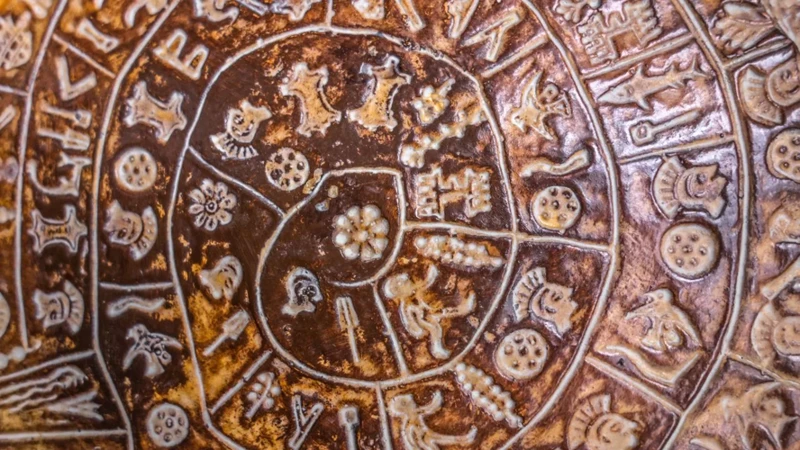
Decoding Planetary Symbols takes us on a journey to unravel the deeper meanings behind these celestial glyphs. While the planetary symbols may appear simple at first glance, they hold a wealth of symbolism and interpretation. Symbolic representations of the planets can vary in their meaning across different cultures and belief systems. For instance, the Sun symbol represents vitality, strength, and enlightenment. It is associated with masculine energy and the concept of the ego. The Moon symbol, on the other hand, represents emotions, intuition, and the feminine energy. It is often connected to the subconscious mind and the ever-changing nature of human emotions. Mercury’s symbol embodies communication, intellect, and adaptability. It signifies the exchange of ideas and the ability to express oneself effectively. Venus’s symbol represents love, beauty, and harmony. It embodies romance, relationships, and aesthetic appreciation. Mars’s symbol is associated with energy, passion, and assertiveness. It symbolizes the drive to take action and pursue desires. Jupiter’s symbol represents expansion, growth, and abundance. It signifies luck, abundance, and opportunities for personal and spiritual growth. Saturn’s symbol embodies discipline, responsibility, and structure. It symbolizes limitations, challenges, and the need for perseverance. Uranus’s symbol represents rebellion, innovation, and the urge for change. It reflects uniqueness, individuality, and the breaking of boundaries. Neptune’s symbol embodies intuition, spirituality, and the realm of dreams and illusions. Pluto’s symbol represents transformation, rebirth, and the unconscious. It signifies the transformative power of destruction and regeneration. By understanding these symbolic representations, we can gain insight into the energies and influences that each planet brings into our lives. Astrological interpretations further deepen our understanding, as each planet’s placement in a birth chart can provide valuable insights into an individual’s personality traits, strengths, and challenges. By decoding these planetary symbols, we unlock a world of hidden meanings and gain a deeper appreciation for the intricate tapestry of the celestial realm.
Symbolic Representations
Symbolic representations play a significant role in decoding the meaning behind planetary symbols. Each planetary symbol carries a unique set of associations and symbolism that provide insights into their characteristics and influences. These symbols act as visual metaphors, capturing the essence and qualities of each planet. For instance, the symbol of the Sun, with its radiant and central dot, represents vitality, life force, and ego. The crescent shape of the Moon symbolizes intuition, femininity, and emotions. Mercury’s combination of the crescent and cross suggests communication, intelligence, and adaptability. Venus’s circle with a cross embodies love, beauty, and sensuality. Mars’s symbol, with its upward arrow, signifies action, assertion, and aggression. Jupiter’s symbol, resembling the number four, symbolizes expansion, abundance, and growth. Saturn’s sickle-shaped symbol represents discipline, structure, and time. Uranus’s combination of the cross and sickle represents innovation, rebellion, and unexpected change. Neptune’s trident symbolizes intuition, spirituality, and transcendence. Pluto’s initials, P and L, encapsulate transformation, power, and regeneration. These symbolic representations provide a deeper understanding of the planets’ archetypal energy and allow us to connect with their cosmic significance in astrology and beyond.
Astrological Interpretations
Astrological Interpretations play a significant role in understanding the influence of planetary symbols on individuals’ lives. Astrology is based on the belief that the positions and movements of celestial bodies can have an impact on human behavior, personality traits, and life events. Each planet’s symbol carries specific energy and symbolism, which astrologers analyze and interpret to gain insights into an individual’s horoscope. For instance, the Sun symbol represents vitality, self-expression, and leadership qualities. Its placement and aspects in a birth chart can indicate a person’s core essence and their drive for success. The Moon symbol, on the other hand, represents emotions, intuition, and nurturing instincts. Its placement in a chart can reveal how a person expresses their emotions and their preferred style of nurturing others. Similarly, the symbols for other planets like Mercury, Venus, Mars, Jupiter, Saturn, Uranus, Neptune, and Pluto all have their unique astrological interpretations. By examining these symbols’ relationships with the other elements in a birth chart, astrologers can provide individuals with valuable insights into their strengths, weaknesses, and potential life experiences. Incorporating the planetary symbols into astrology allows for a more nuanced understanding of the celestial energies that shape our lives and personal destinies. So, whether you are seeking guidance, self-discovery, or simply a deeper connection with the cosmos, exploring the astrological interpretations of planetary symbols can offer profound insights and a greater understanding of yourself and the world around you.
The Influence of Planetary Symbols
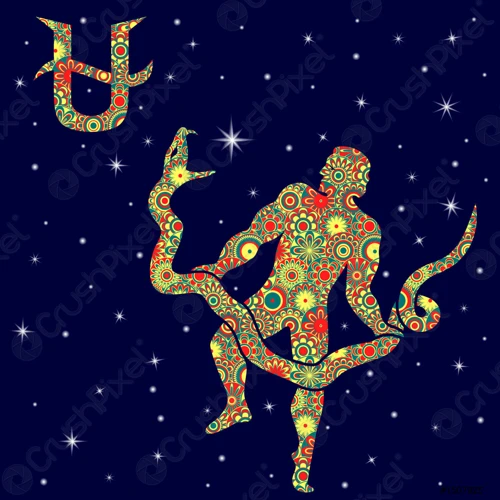
The Influence of Planetary Symbols extends far beyond the realm of mythology and astrology. These symbols have made a significant impact on various aspects of human culture, including art, literature, and popular culture. Artists have incorporated planetary symbols into their works as a way to represent celestial themes and cosmic forces. These symbols often appear in paintings, sculptures, and even tattoos, adding layers of meaning and symbolism to the artwork. In literature, planetary symbols are frequently used to enhance storytelling and convey deeper messages about characters and their journeys. For example, the Sun symbol might represent vitality and energy, while the Moon symbol could symbolize mystery and femininity. These symbols help create a rich and nuanced narrative that resonates with readers. In popular culture, planetary symbols have become iconic representations that instantly evoke specific attributes or emotions. They are commonly seen in astrology-themed merchandise, such as jewelry, clothing, and home decor. Many people also associate these symbols with their zodiac signs and use them as personal identifiers or talismans. The influence of planetary symbols in these various cultural aspects showcases the enduring fascination and universal appeal of the celestial realm. Whether as artistic motifs, literary devices, or pop culture symbols, these planetary symbols continue to captivate our imagination and leave a lasting impression on our collective consciousness.
Art and Literature
Art and Literature have long been inspired by the symbolism of planetary symbols. Artists and writers have used these symbols to convey deeper meanings and explore the cosmic forces that shape human existence. In art, planetary symbols are often depicted in paintings, sculptures, and other visual forms to represent various themes and emotions. For example, the Sun symbol may be used to convey concepts of vitality, enlightenment, and power, while the Moon symbol may evoke ideas of mystery, intuition, and reflection. In literature, planetary symbols are woven into the tapestry of storytelling, adding layers of symbolism and depth to the narrative. Authors may use these symbols to represent characters, plot elements, or larger thematic concepts. Whether it is through the brushstrokes of a painting or the pages of a novel, planetary symbols add an element of intrigue and mystique to the artistic and literary world, inviting audiences to contemplate the cosmic forces that shape our lives.
Modern Pop Culture
Modern Pop Culture has embraced the symbolism of planetary symbols, incorporating them into various forms of media and entertainment. These celestial symbols have captured the imagination of artists, authors, filmmakers, and musicians, adding depth and intrigue to their creations. In movies and television shows, planetary symbols are often used as visual motifs to represent cosmic themes, futuristic settings, or otherworldly characters. They can be seen as intricate tattoos on characters in science fiction films or as iconic emblems on spaceships. In literature, authors use planetary symbols to add a sense of mystique and symbolism to their stories. These symbols can represent the characters’ destinies or serve as a metaphorical representation of their inner struggles. Musicians have also been inspired by planetary symbols, incorporating them into album covers, stage designs, and even song lyrics. The symbolism of these celestial symbols resonates with listeners, evoking a sense of wonder and fascination. In addition to popular media, planetary symbols have also found their way into fashion and design. They are often incorporated into jewelry, clothing, and accessories, allowing individuals to express their connection to the cosmos and their own astrological identities. The use of planetary symbols in modern pop culture has not only made these ancient symbols more accessible but also showcases their enduring relevance and timeless appeal. Whether consciously or subconsciously, we are drawn to these symbols, finding meaning in their celestial origins and the stories they represent.
The Mystery Unveiled
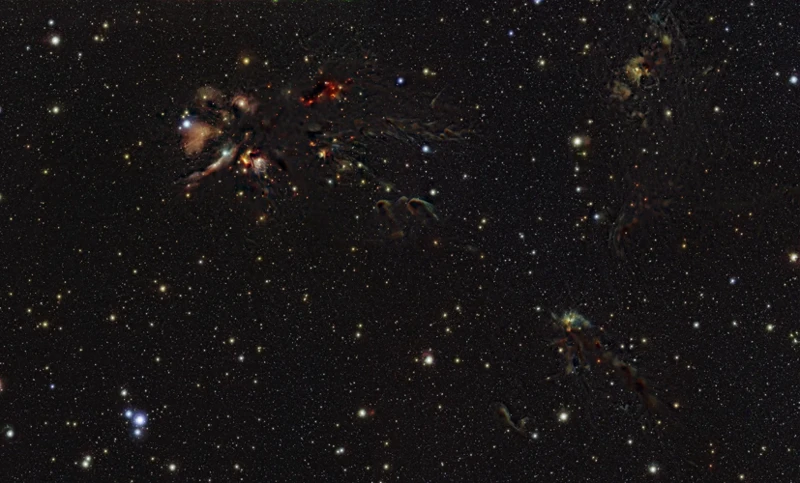
The Mystery Unveiled surrounding planetary symbols lies in their symbolic representations and astrological interpretations. Each symbol holds layers of meaning that can be decoded to gain a deeper understanding of their significance. Symbolic representations vary based on the mythology and cultural beliefs associated with the planets. For example, the Sun symbol represents vitality, life force, and energy. The Moon symbol signifies intuition, emotions, and the subconscious mind. Mercury’s symbol represents communication, intellect, and travel. Venus’s symbol embodies love, beauty, and harmony. Mars’s symbol represents action, aggression, and courage. Jupiter’s symbol symbolizes growth, abundance, and wisdom. Saturn’s symbol represents discipline, responsibility, and structure. Uranus’s symbol symbolizes innovation, rebellion, and uniqueness. Neptune’s symbol represents spirituality, intuition, and dreams. Pluto’s symbol embodies transformation, power, and regeneration.
Astrological interpretations add another layer of meaning to these symbols. Astrologers believe that the placement of the planets at the time of one’s birth influences their personality, behavior, and life patterns. For instance, the Sun symbol in astrology represents the core essence of one’s identity and ego. Its position in a birth chart determines the individual’s zodiac sign and their basic character traits. The Moon symbol in astrology represents one’s emotions, instincts, and nurturing instincts. Its placement in a birth chart signifies emotional patterns and how one responds to their environment. Similarly, the symbols of other planets have specific astrological interpretations that shape an individual’s astrological profile.
Decoding the meaning behind planetary symbols allows astrologers and enthusiasts to gain insight into various aspects of life, such as love, career, and personal growth. By understanding the symbolic representation and astrological interpretations, individuals can navigate the cosmic energies and make informed decisions to align with their life’s purpose. The mystery of planetary symbols is unveiled through this intricate web of symbolism and astrology, offering a profound understanding of the cosmic forces that shape our lives.
Conclusion

In conclusion, unraveling the mystery behind planetary symbols takes us on a journey through ancient mythology, astrology, and the artistic expressions of humanity. These symbols hold a deep significance and continue to captivate our imaginations. They connect us to the celestial realm, allowing us to explore the influences and energies of the planets in our lives. By understanding the origins of these symbols, we gain a greater appreciation for the rich history and cultural significance they hold. From the Sun’s radiant power to the Moon’s mystical allure, each planetary symbol represents a unique aspect of our universe. They not only guide us in astrology, but also inspire artists, writers, and creators to incorporate these symbols into their works. From Renaissance paintings to modern literature and music, planetary symbols have left an indelible mark on art and culture. Exploring the influence of these symbols in various forms of expression adds a layer of depth and complexity to our understanding of the celestial bodies. So whether you are a believer in astrology or simply curious about the mysteries of the universe, unraveling the symbolism of planetary symbols reminds us of the profound interconnectedness between the cosmos and our own lives.
Frequently Asked Questions

Why do planets have symbols?
Planets have symbols to represent them visually and differentiate them from one another. These symbols have been used for centuries in astrology and mythology to convey the essence and characteristics of each celestial body.
Who created the planetary symbols?
The origins of planetary symbols are not attributed to a single creator. They evolved over time through a combination of ancient beliefs, cultural influences, and astrological practices.
Do different cultures have different planetary symbols?
While there are some variations, the basic planetary symbols have common features across different cultures and astrological systems. However, the interpretations and associations with these symbols may vary.
What is the significance of planetary symbols in astrology?
Planetary symbols are a crucial part of astrology as they represent different planetary energies and influences. Astrologers use these symbols to interpret birth charts and make predictions about personality traits, relationships, and life events.
Are there symbols for other celestial bodies besides planets?
Yes, there are symbols for other celestial bodies such as the Sun, Moon, and various asteroids. These symbols are often included in astrology charts and represent different aspects of an individual’s personality or life events.
Can planetary symbols be found in constellations?
No, planetary symbols are not directly associated with constellations. Constellations are groups of stars that form patterns in the sky, while planetary symbols represent specific celestial bodies in our solar system.
How were the meanings behind planetary symbols determined?
The meanings behind planetary symbols were determined through a combination of ancient mythology, astrology, and cultural beliefs. They were shaped by the roles and associations of various gods and goddesses in different civilizations.
Are planetary symbols used outside of astrology?
Yes, planetary symbols have found their way into various aspects of art, literature, and popular culture. They are often used as decorative elements, incorporated into jewelry designs, and featured in science fiction and fantasy works.
Can you explain the symbolism behind the Ophiuchus symbol?
The Ophiuchus symbol represents a serpent bearer, associated with the constellation Ophiuchus. It embodies the idea of healing and transformation as Ophiuchus is often seen as a healer or a symbol of wisdom and spiritual knowledge.
Where can I learn more about the symbolic meanings of planetary symbols?
To delve deeper into the symbolic meanings of planetary symbols, you can explore ancient mythology, astrology books, and online resources dedicated to the subject. Websites and books on astrology symbolism can provide valuable insights and interpretations.
References
Frequently Asked Questions

1. What are the ancient origins of planetary symbols?
The ancient origins of planetary symbols can be traced back to various mythologies and belief systems, where celestial bodies were associated with specific gods and goddesses.
Planetary symbols are closely linked to astrology, as they represent the different celestial bodies that hold astrological significance and influence over various aspects of human life.
3. What is the symbolism behind the Sun symbol?
The Sun symbol represents energy, vitality, and life force. It is often associated with warmth, power, and the masculine principle in many cultures and mythologies.
4. What does the Moon symbol signify?
The Moon symbol is associated with feminine energy, intuition, emotions, and the subconscious mind. It represents cycles, change, and the ever-present influence of the lunar phases.
5. What does the Mercury symbol represent?
The Mercury symbol signifies communication, intellect, adaptability, and duality. It represents the planet’s association with the messenger of the gods in ancient mythology.
6. What is the significance of the Venus symbol?
The Venus symbol represents beauty, love, harmony, and feminine energy. It is often associated with relationships, romance, and artistic expression.
7. What does the Mars symbol signify?
The Mars symbol signifies action, passion, courage, and assertion. It represents the planet’s association with war and the masculine warrior archetype.
8. What is the symbolism behind the Jupiter symbol?
The Jupiter symbol represents expansion, growth, abundance, and wisdom. It is associated with good fortune, luck, and the pursuit of knowledge and higher understanding.
9. What does the Saturn symbol signify?
The Saturn symbol signifies discipline, responsibility, limitations, and structure. It represents the planet’s association with time, karma, and the lessons learned through experience.
10. What is the symbolism behind the Neptune symbol?
The Neptune symbol represents intuition, spirituality, dreams, and illusion. It is associated with the realm of imagination, mysticism, and the exploration of the unconscious mind.

